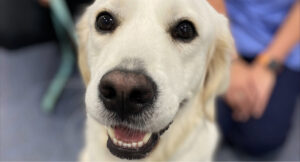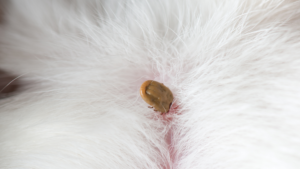What is outdoor plant toxicity?
Most pet parents are happy to let their fur babies out into their backyard, or for walks at the local park. However, the potential danger of plant toxicity is often overlooked, with many common garden and park plants being toxic to our beloved pets.
Believe it or not, most plants can be toxic if a large quantity is ingested by our pets, even those considered pet safe. But in this article, we will look at some common plants that are very toxic to pets and the toxins within them.
It is also worth noting that there are also toxic wild mushrooms in Australia, including Agaricus xanthodermus, the Yellow-staining mushroom and deadly Death Cap, Amanita phalloides. When it comes to mushrooms, it is best to assume wild mushrooms are toxic and try to prevent pets accessing them. If your pet does eat a wild mushroom, seek out Vet advice immediately.
Who is affected?
Dogs and cats of anyage and breed can be affected by plant toxicity and there is no specific breed that is more susceptible to plant toxicities. According to PetSure data during the 2020 calendar year, dogs and cats under three years of age had more incidences of plant toxicity. This may reflect the behaviour of young pets who can be more inquisitive and more likely to chew on things they shouldn’t. Because toxic plants present a danger to all dogs and cats, it is best to not take any chances, deny access to potential toxic plants for dogs and provide an outdoor cat run for your beloved cats.
According to PetSure data in 2020, intoxication due to ingestion of plants was most prevalent in the following breeds:
| Breed | Prevalence |
| Dachshund | 0.34% |
| Bull Terrier | 0.32% |
| English Springer Spaniel | 0.26% |
| Doberman | 0.25% |
| Labrador Retriever | 0.23% |
| French Bulldog | 0.22% |
| Burmese Mountain Dog | 0.21% |
| Shiba Inu | 0.20% |
| Tenterfield Terrier | 0.20% |
| Australian Silky Terrier | 0.19% |
Prevalence = Total number of unique claiming pets / total number of insured pets across 12-month period. Excludes breeds with less than 500 active pet insurance policies.
Signs of plant toxicity
Depending on the toxin involved and the amount consumed, signs of plant toxicity can vary. Mild signs may be associated with oral irritation such as drooling or rubbing at the mouth, or there maybe gastrointestinal upsets including vomiting and diarrhoea. More serious signs can include abdominal pain and lethargy ranging through to very serious signs which may include symptoms associated with organ damage, or neurological signs like seizures. Death can occur with some toxins, so it is important to speak to your Vet if you think your pet has eaten a plant they shouldn’t have.
Table 1: Common toxins, plants and symptoms of toxicity in dog and cats
| Toxin | Common Plant Species | Symptoms |
| Ricin – toxic protein | Castor bean or castor oil plant (Ricinus communis) | Abdominal painDroolingVomiting & diarrhoeaWeaknessLoss of appetiteDeath |
| Glycosides | Oleander (Nerium oleander) Aloe (Aloe vera) Gardenia (Gardenia jasminoides) Tulips Bulbs (Tulipa) Fox gloves (Digitalis purpurea) Lily of the valley (Canvallaria majalis) Wall flowers (Cheiranthus cheiri) | Vomiting & diarrhoea Tremors/dilated pupils Changes to the heart rate and rhythm |
| Pyrethrins (Affect cats particularly badly) | Chrysanthemum (Chrysanthemum) Pyrethrum daisy (Tanacetum cinerariifolium) Dalmatian insect flower (Tanacetum cinerariifolium) | Drooling (cats) Vomiting Tremors AgitationSeizures Changes to breathing |
| Grayanotoxins | Azalea (Rhododendron) Australian Heaths (Epacridaceae) | Vomiting & diarrhoeaDroolingWeaknessTremors BlindnessComa & death |
| Alkaloid | Gardenia (Gardenia jasminoides) Tulips Bulbs (Tulipa) Desert Rose | Abdominal painRespiratory changes or stopping Vomiting & diarrhoea Heart involvement can cause death Seizures Collapse Tremors Paralysis |
| Cycasin | Sago palms (Cycas revolute) | Vomiting & diarrhoea Neurological signs such as weakness, incoordination, tremors, seizures Liver damage – jaundice, yellow appearance, not eating, depressed |
| Saponin | Aloe (Aloe vera) Gardenia (Gardenia jasminoides) Agave (Agave lechuguilla) Yucca (Yucca) | Drooling Vomiting & diarrhoea Depression & drowsiness Weakness Low heartrate Dilated pupils |
| Solanine | Nightshade family (including eggplant, tomatoes, tobacco, and capsicum), Black Nightshade (Solanum nigrum) Green potatoes Lantana (Lantana spp) | Vomiting & diarrhoeaLoss of coordinationTremors |
| Calcium oxalate | Peace Lily (Spathiphyllum) Dieffenbachia Calla lily Arrowhead Dumbcane Philodendron Elephant’s Ear Chinese Evergreen Schefflera | DroolingOral painVomiting & diarrhoeadifficulty breathing |
Management of plant toxicity
Preventing plant toxicity is more effective than treatment! However, in the unfortunate event that your pet has ingested some plant materials and you are unsure if it is toxic, it is best to treat it as a toxic plant. Remove any plant material from your pet’s mouth, and you should consider having your pet checked by your vet. Before you visit your vet, remember to take samples of the plant as well as photos of the leaves, flowering parts and any fruits on the plant. These will help your vet to identify if the plant is toxic to your pet and will aid in providing the best treatment protocol.
Treatment of plant toxicity will depend on the type of toxin present in the plant, it may include removing any plant material left in your pet’s mouth, rinsing with water/milk, removing any plant material left in the stomach by inducing vomiting. Activated charcoal may be given to absorb toxin in the intestinal tract. In severe cases, medications may be needed where the pet’s heart and lungs function has been affected and your pet may need to be hospitalised for continued monitoring of vital functions, some pets may need intravenous fluids to support internal organs that has been damaged.
To pet proof your garden, you should aim to only add pet safe plants as well as identify and remove any toxic plants. You can provide a safe outdoor space for your cats by providing them with a secure enclosure. This way your cat is kept safe from toxic plants, as well as other hazards like roads, other cats, snakes and prevents them from hunting wildlife.
Make sure you provide your pets with appropriate plants to enjoy, including pet grass and cat nip / mint for cats.
Once you have pet proofed your garden, be mindful that pesticides, such as rodenticide, snail bait. other pesticides and fertilisers can still be harmful to pets.
Table 2: Some common non-toxic outdoor plants
| Common non-toxic outdoor plant |
| Camellia (Camellia japonica) |
| Fuchsia (fuchsia) |
| Sunflower (Helianthus) |
| Rose (Rosa) |
| Petunia (Petunia) |
| Coral bells (Heuchera) |
| Crepe myrtle (Lagerstroemia) |
| Rosemary (Rosmarinus officinalis) |
| Hibiscus (Hibiscus syriacus) |
| Silver heart (Peperomia caperata) |
How much does it cost to treat?
According to PetSure claims data from the 2020 calendar year, the average, single treatment cost relating to plant toxicities was $648, with the highest, single treatment cost being $19,758.
Is plant toxicity covered by pet insurance?
Plant toxicity is generally covered by Comprehensive Accidental Injury and Illness pet insurance policies administered by PetSure (check our brand partners at petsure.gholab.com.au/partners), unless related to a pre-existing condition or exclusion. Refer to your policy documents including Certificate of Insurance and Product Disclosure Statement for more information on whether this condition is covered under your policy.
Disclaimer: Reimbursement for these claims would be subject to limits, such as annual benefit limits or sub-limits, benefit percentage, applicable waiting periods and any applicable excess. Cover is subject to the policy terms and conditions. You should consider the relevant Product Disclosure Statement or policy wording available from the relevant provider.
Pet insurance can help by covering a portion of the eligible vet bill if the unexpected happens. Because it is difficult to predict the costs of veterinary care, it can help to have measures in place to help prepare for the unexpected. Check out our partner network and explore our policy tools to find a pet insurance policy.
Not all conditions or items are covered by Pet Insurance. Refer to the applicable Product Disclosure Statement for information about coverage and exclusions.








